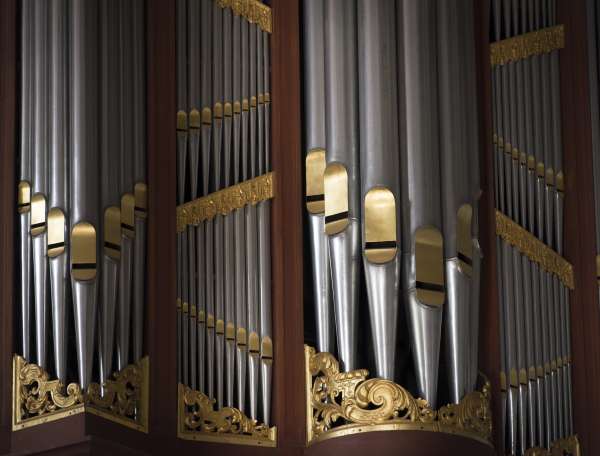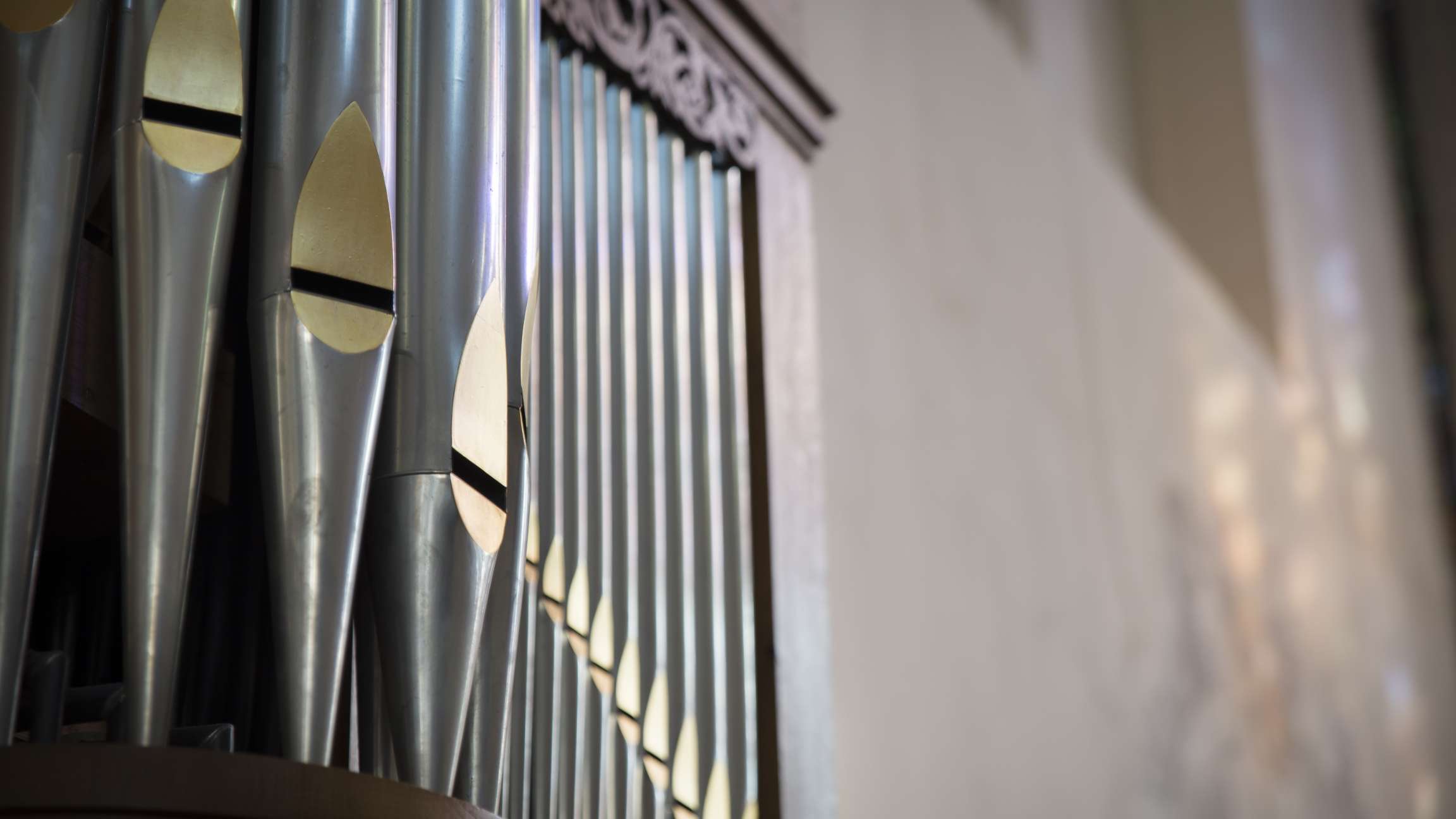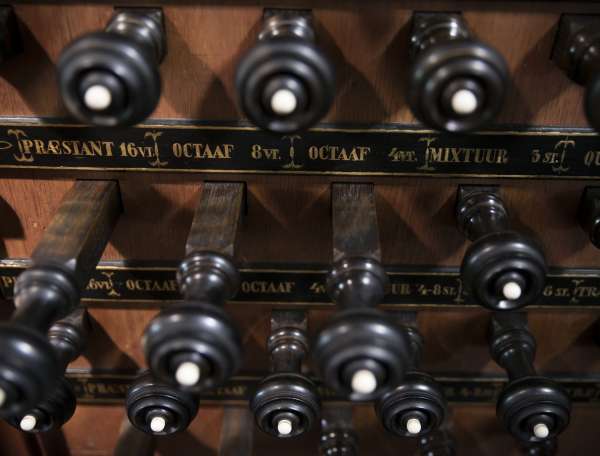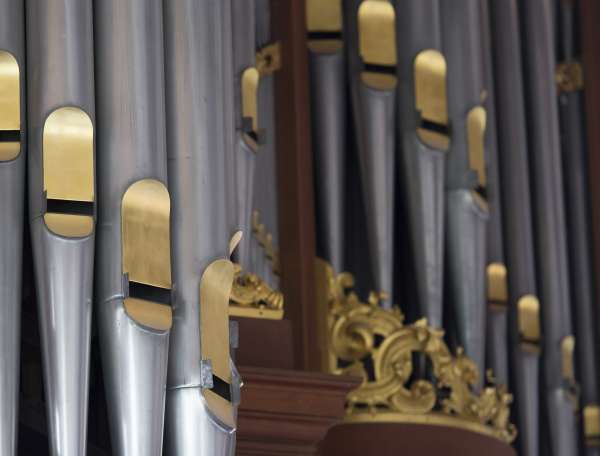

Fughetta super:Allein Gott in der Höh sei Ehr
BWV 677 performed by Reitze Smits
St Jacob's Church, Leeuwarden
Behind the music
A cheerful double fugue
Bach demonstrates the beneficial effect of the Holy Trinity
In this chorale arrangement of the Lutheran gloria 'Allein Gott in der Höh sei Ehr', Bach used only a small section of the hymn. This is different to the arrangements based on the same chorale – BWV 675 and 676 – which do use the complete melody. For BWV 677, Bach chose a fugal approach, whereby he makes use of just the first two lines (‘Allein Gott in der Höh sei Ehr / und Dank für seine Gnade’), which serve as the basis for his two themes. The twenty-bar double fugue thus created, which lasts barely a minute, is nothing but cheerful, jubilant singing. A charming contrast is discernible between the tersely executed first theme and the woolly embellishment of semiquavers that conceals the melody. The second theme subtly joins in this pattern of semiquavers, making it much more difficult to recognise. But when it all comes together in the final five bars, Bach draws on these three tunes so artfully that there can be no doubt whatsoever about the beneficial effect of the Holy Trinity – which is what this hymn is all about.
Clavier-Übung
In Leipzig, between 1731 and 1741, Bach published four parts of Clavier-Übung, a title used previously by Johann Kuhnau, his predecessor as cantor at the Thomasschule, for similar collections of works for organ and harpsichord. The compositions are very varied in nature and, although the title suggests otherwise, were difficult to play. Bach addresses all the styles, genres and techniques for harpsichord and organ that were prevalent at the time, but then in the superior form to which only he had the patent.
Clavier-Übung I (1731) contains the six partitas, BWV 825-830; Clavier-Übung II (1735) the Concerto nach italienischen Gusto, BWV 971 and the Ouverture nach französischer Art, BWV 831; and Clavier-Übung IV (1741) the Goldberg Variations, BWV 988. The largest part, Clavier-Übung III (1739), is the only one devoted to organ, containing mostly chorale arrangements, or organ preludes based on Lutheran hymns. Bach made two versions of each chorale: one for great organ and one for a smaller type of organ. Most of the chorales refer to the six parts of the catechism. It is unclear whether Bach also played them during the services, or whether he developed his musical ideas in them for his own use, with no intention of performing them in public.
- BWV
- 677
- Title
- Fughetta sopra Allein Gott in der Höh sei Ehr
- Instrument
- organ
- Genre
- organ works
- Serie
- Clavier-Übung III
- Year
- 1739
- City
- Leipzig
Extra videos
Vocal texts
Original
Translation
Credits
-
- Release date
- 17 July 2015
-
- Recording date
- 15 September 2014
-
- Location
- St Jacob's Church, Leeuwarden
-
- Organist
- Reitze Smits
-
- Organ registration
- Mayuko Banno
-
- Organ
- Christian Müller, 1727
-
- Producer
- Frank van der Weij
-
- Film director
- Jan Van den Bossche
-
- Directors of photography
- Diderik Evers, Ruben van den Broeke
-
- Music production, editing and mix
- Holger Schlegel
-
- Film editor
- Dylan Glyn Jones
-
- Colorist
- Jef Grosfeld
-
- Production assistant
- Hanna Schreuders
-
- Interview
- Onno van Ameijde
-
- Acknowledgements
- Rob Tigchelaar
Discover
Help us to complete All of Bach
There are still many recordings to be made before the whole of Bach’s oeuvre is online. And we can’t complete the task without the financial support of our patrons. Please help us to complete the musical heritage of Bach, by supporting us with a donation!

